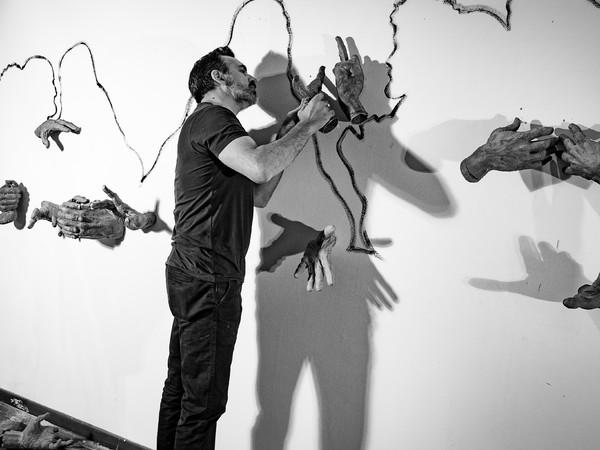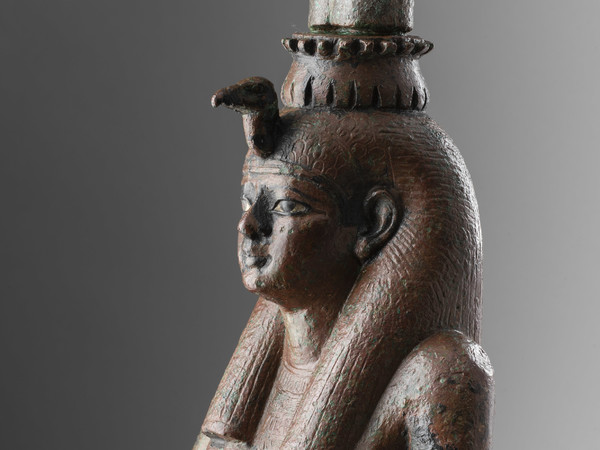Edouard Mats, Boy who eats cherries1858 CA, Olio SU screen, 54.5 x 65.5 cm, Lisbon, Museo Calouste Gulbenkian | Photo: © Catarina Gomes Ferreira
The journey between words and painting that unite the brushes of the great masters and the pages of Marcel Proust begins from a painting and a shot. Set approximately between 1890 and 1920, Looking for the lost time It describes the social, artistic and intellectual life of that time. The most important setting is Paris, where Proust was born all his life and lived, with his roads, streets, parks, gardens that also frame the works of great painters, from Camille Pissarro to Pierre-Auguste Renoir, Raoul Duffy.
To weave the threads of the pen and color, an ongoing exhibition is in the Thyssen-Bornemisza Museum in Madrid until 8 June, entitled Proust and the Artsedited by Fernando Checa. The path, in particular, focuses on one of the most striking themes of Proust’s work: the founding and consolidation, in the last decades of the nineteenth century, of a new and modern discipline, the history of art, but also the attraction of cities, and still visited by Proust twice and still on the love of the writer for the writer.
Jacques -ed Blanche, portrait of Marcel Proust, 1892, oil on canvas, 60.5 x 73.5 cm, Orsay Museum, Paris. Grand Palais RMN (Musée d’Orsay) / Hervé Lewandowski
Proust has never visited Rome, Florence or Naples, but the city of canals, another of the institutions of Looking for the lost timestayed in his heart. Along the way the visitor finds it in working such as La Dogana and San Giorgio Maggiore, Venice (1834) by Joseph MW Turner, or even in the etchings made by James McNeill Whistler in 1880 and by Mariano Fortuny and Madrazo. The chapter also contains various textile pieces of Fortuny (a tunic that belongs to Proust, a Delphos dress and a substance inspired by Renaissance), and a poisoning of the painter founded in Venice and that embodies the association of the city with carpaccio, Ruskin and the taste for Proust.
The Paris of the Champs -éseses, the Bois de Boulogne and the aristocratic buildings of the Saint -Germain of Faubourg, of the carriages in Avenue du Bois, and the beaches of North France could not be missing in the exhibition path Looking for lost time Regarding the canvases of the big painters.
There is an insoluble link between Proust and the art. The writer was mainly attracted to that modernity that was so fashionable at the end of the nineteenth century. The cosmopolitan and rich capital of the Third Republic who has experienced an in -depth transformation with the appearance of electricity, cars, released between shows, restaurants and bars, is the same universe of Charles Swann and the Aristocratic Guermantes family.
Under the central characters of the novel, Charles Swann is the symbol of the Paris High Bourgeoisie, interested in the history of art, criticism and collecting. To create this figure, Proust in particular made the collaboration between art critic Charles Haas and the historian, critic, art collector and director of the Gazette des Beaux Arts Charles Ephrussi, depicted in two exhibited works. Among the documents that are also shown, also the Bust of Anatole France with bare chest (Bourdelle, 1919), French writer whose Proust attracted inspiration for the character of Bergotte.
Maar de tentoonstelling omarmt ook schilderijen van Rembrandt, Johannes Vermeer, Anton van Dyck, Jean-Antoine Watteau, Joseph MW Turner, Manet, Monet, Renoir, gewoon om er een paar te noemen, en een sculptuur door Émile Antoine Bourdelle, evenals een selectie van de Biblothsque National De nationale Derance en van de Biblothsque National De nationale de nationale de nationale de nationale de National The Nationale The Nationale The Nationale The Nationale The Nationale De Nationale De Dekrankie and the Biblothque National The Nationale De Nationale De Nationale and still Madrid, in addition to loans from the Musée du Louvre, the Musée d’Orsay and the Carnavalet of Paris, from the Mauritshuis Dell’aiaia.

Marcel Proust, Pleasures and Days, 1896, illustration by Madeleine Lemaire. Dimensions: 29.7 x 20.9. Paris, National Library of France, Reserve or Rare Books
An Essential Aesthetic Experience for Proust was the contemplation of the French gothic cathedrals, which the writer visited letting himself be guided by the writings of the French art historian Émile mâle and English john ruskin – or traice a reader, he was a reader, he is a reader and transylator, he is a reader and transylator, he is a reader and transylator, he is a reader and transylator, he is a reader and transylator, he is a reader’s heis. He is a reader’s he. Heis’s he. Lover, Alfred Agostinelli. De tentoonstelling in Madrid omarmt werken van Paul-César Helleeu, Eugène Boudin, Alfred Sisley, Gustave Loiseau, Armand Guillaumin en Jean-Baptiste-Cerot Corot die kerken en kathedralen van Reims van Reims van REIMS van REIMS van REIMS en een kopie van zei en een kopie van zei portretten en een kopie van de ontwerpen van John Ruskin and a copy of John Ruskin’s designs by Amiens and a copy of John Ruskin’s designs by Amiens and a copy of John Ruskin’s designs by Amiens and a copy of them. Amiens Bible (1904), translated and with a prologue prologue.
The figure of Alfred Agostinelli, the most important character of two parts of the novel, in which the author presents a long elaboration about jealousy, the suspicions of unfaithfulness and forgetfulness, which acts as a model for Albertine, is also of fundamental importance to work for the aspects of the modernity of the early twentieth century.
The section dedicated to modernity also presents works by Giacomo Balla and Jean Cocteau, which testify to the development of the Avant -Garde movements of that time, as well as a scenography, two posters and a photo of Sergej Diaghilev’s Ballets Russes, whose Proust shows that he regularly visited.
We arrive at the end of the exhibition with a section entitled “The Time Found”. At the end of the seven parts of the novel, the worlds of Swann and Guermantes meet in a last big party that is held after the war. In the last part of his big work, exactly entitled The time foundProust reveals how ruthless and destructive the passage of time is. Before the public is rejected, the exhibition takes this idea in painting by two Rembrandt self -portraits and two images of Marcel Proust at a death point in 1922.
#Marcel #Proust #Arts #story #discover #Madrid #World





